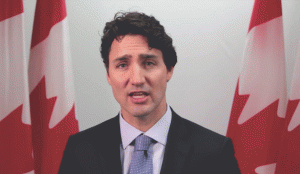
During his brief stay – about three days – at the United Nations Climate Change Conference in Glasgow, Scotland, Prime Minister Justin Trudeau eagerly committed Canada to big promises to reduce greenhouse gases in the atmosphere. Given how fraught the climate change and greenhouse emissions discussions are here in Canada, Mr. Trudeau is in a tricky position.
With clear signs of coastal erosion, droughts, unusual numbers of hurricanes, flooding, extreme weather events of all sorts in all parts of the planet, world leaders know that it will require the Wisdom of Solomon to address widespread anxiety in the face of these extreme events while building a green economy. They know that many working families that depend on the fossil burning economy for their livelihoods will not survive in the new green dispensation; the economic life of a large segment of the population will almost certainly come to an end.
The need to walk the narrow path between these competing interests is a load carried by Mr. Trudeau and his counterparts; they acknowledged as much in many parting speeches. They spoke about the hard work required in fighting climate change as “the greatest long-term threat of our time” and “the greatest opportunity for our economy and workers.”
It is true that new economic opportunities and employment do occur while constraining climate change. One need only look at Newfoundland’s successful conversion of the Come By Chance oil refinery that now produce renewable fuels, or mothballed coal mine land now turned into wind farms in Nova Scotia for such examples. But can we say the same for economic activities in Canada at large? Trideau seems to think that this is possible if we push hard enough.
So here are some of the commitments the Prime Minister made at COP26 conference:
– Increasing carbon pricing to cover a greater percentage of greenhouse gas emissions, from the current $40 per tonne to $170 per tonne by 2030. The resulting higher-priced fuel will be offset by rebates in jurisdictions where carbon charges are collected.
– Net zero emissions from electricity generated in Canada by 2035. Ending the export of thermal coal and phasing out conventional coal-fired electricity by 2030, with $185 million in support for Canadian coal workers and their communities during the transition period. Up to $1 billion to help developing countries move from coal to cleaner energy forms.
– Capping and reducing pollution from the oil and gas sector to net zero by 2050.
– Protecting 25 per cent of Canada’s land and oceans by 2025.
– Planting 2 billion trees, ending and reversing deforestation globally and helping developing countries to do the same.
At the end of the climate confab in Glasgow, countries are expected to agree to constrain global warming by keeping it below 1.5 degrees this century. They are also required to commit to net zero emissions by 2050 by first halving it by 2030.
The world depends on these nations keeping these promises as we depend on Trudeau.
COP stands for “Conference of the Parties” – and this is the 26th time it has been held.


